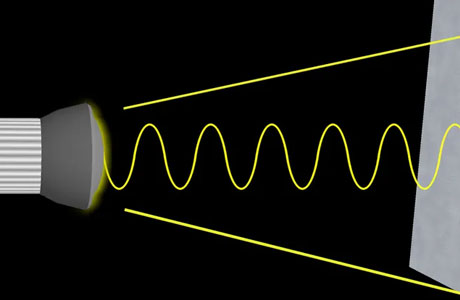Key Takeaway
The principle of the photoelectric effect involves the release of electrons from a material when exposed to light. Photons transfer their energy to the electrons, and if the energy is sufficient, the electrons are emitted.
These electrons, known as photoelectrons, are essential for applications like solar panels and photoelectric sensors. This principle helps us understand the particle nature of light and forms the basis for many technologies.
An Overview of the Photoelectric Effect’s Working Principle
At the core of the photoelectric effect lies a simple yet fascinating concept: when light hits a material, such as metal, it transfers energy to the electrons in that material. If the energy of the incoming light, or photons, is greater than a certain threshold, the electrons absorb that energy and are freed from the material. This phenomenon can only occur if the light has enough energy, measured in terms of frequency. A higher frequency means higher energy, which is necessary to overcome the “work function” of the material – the minimum energy required to release an electron.
This is why ultraviolet light, with its higher frequency, can cause the photoelectric effect, while visible light often cannot. The key here is that the intensity of light doesn’t matter if its frequency isn’t high enough. This principle revolutionized our understanding of light and energy, showing that light behaves as both a wave and a particle.

How Light Energy Converts into Electrical Energy
The process of converting light energy into electrical energy is fascinating, especially through the photoelectric effect. When light hits a material’s surface, photons carry energy. If these photons have enough energy, they transfer it to electrons within the material. These energized electrons, known as photoelectrons, break free from the atomic structure. By capturing these free electrons, electrical current can be generated.
Think of it as sunlight being transformed into electricity. This principle forms the backbone of devices like solar cells, which are essential for clean energy production. Without this process, many renewable energy applications wouldn’t exist. This photoelectric effect not only powers homes with solar energy but also finds usage in industries, powering tools from light sensors to spacecraft systems.
Quantum Explanation of the Photoelectric Effect
The photoelectric effect was first explained in terms of quantum physics by Albert Einstein. He proposed that light is not just a continuous wave but consists of particles called photons. Each photon carries a certain amount of energy, depending on its frequency. When a photon hits an electron, it transfers its energy to the electron. If this energy is enough, the electron escapes the material’s surface.
Einstein’s explanation revolutionized how we understand light. It was a groundbreaking moment in science, contradicting the classical view that light’s energy only depends on its intensity. This discovery laid the foundation for quantum mechanics, showing that light behaves both like a wave and a particle. This dual nature of light continues to shape technological advancements today, influencing everything from medical devices to communication technologies.
Real-World Implications of the Photoelectric Effect
The photoelectric effect is not just a scientific curiosity; it has real-world applications that impact our daily lives. Solar panels, for instance, use this effect to convert sunlight into electricity, driving the global shift towards renewable energy. Without the photoelectric effect, solar energy solutions wouldn’t exist, and we’d rely more on non-renewable sources.
Beyond energy, the photoelectric effect plays a crucial role in industrial automation. Photoelectric sensors, commonly used in manufacturing, depend on this principle to detect objects by sensing reflected light. These sensors are vital in keeping production lines efficient and safe. Thanks to the photoelectric effect, industries are more automated, efficient, and sustainable today.
Key Contributions to the Development of the Photoelectric Effect
Although Einstein is often credited with explaining the photoelectric effect, the discovery was a collective effort. Heinrich Hertz first observed the effect while experimenting with ultraviolet light in 1887. However, it was Albert Einstein who explained the mechanism using quantum theory. His explanation, building on Max Planck’s work, earned him the Nobel Prize in Physics in 1921.
Einstein’s contribution laid the foundation for modern physics and advanced technologies. From solar panels to cutting-edge sensors, the implications of his work continue to drive innovation. The collaborative effort of multiple scientists in understanding the photoelectric effect underscores the value of scientific progress and innovation. It remains a cornerstone of technology and energy solutions globally.
Conclusion
The photoelectric effect is more than just a scientific concept; it is a cornerstone of modern physics with wide-ranging implications. By explaining how light can release electrons from materials, the photoelectric effect has allowed us to develop technologies that convert light into electricity and design sensors for various industrial applications. It has also reshaped our understanding of light, energy, and the nature of the universe. Today, industries worldwide harness the power of the photoelectric effect in countless ways, from renewable energy solutions to automated manufacturing processes. Understanding this effect is crucial for anyone in the field of engineering or physics.
